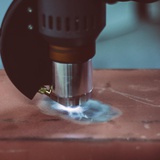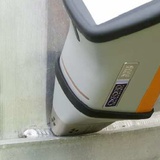Identification of a tested alloy is possible through the examination and analysis of the chemical composition of metals using the XRF X-ray fluorescence spectrometer and the OES spectrometer.
The devices can be used for testing structural steels, stainless steels, low alloy steels, tool steels, nickel alloys, cobalt alloys, copper alloys, titanium alloys, aluminium alloys, unidentified alloys and steels.
The range of tested elements includes both metallic elements and non-metals (carbon, phosphorus, sulphur and nitrogen)
Positive Material Identification (PMI) is a well-developed technique for analysing and identifying chemical elements. PMI is particularly important if in the system there are materials with high strength properties, corrosion and temperature resistance, which are critical element for safe operation of the system. Identification of materials is an integral part of the security system in the implementation of multiple investments. As a result of a series of dangerous failures caused by miscarriage of materials during construction, investors were required by insurance companies to develop procedures for checking the compliance of the materials used with the design documentation.
PMI enables:
• Determination whether the products and components have been manufactured using the correct alloy;
• Finding a mixture of alloys;
• Indication that the material complies with the applicable standard.

Application
Petrochemical and refinery plants, pharmaceuticals and chemicals for pipelines, tanks, valve parts, welded joints and fasteners and as input control of scrap materials or scrap selection. The purpose is to check that the material used complies with the requirements of the designers, the technical documentation and whether there have been mistakes or deliberate actions of the contractors. Our equipment can measure at high temperatures.

Important to know
When ordering a service, define what elements are to be measured. The PMI method using the XRF spectrometer is not used to test low carbon steels, does not measure carbon content. Carbon can be measured using a mobile OES spectrometer. The test piece cannot be coated with corrosion, rust and grease. In order to improve the accuracy of the measurement, it is recommended to thoroughly clean the surface with fine abrasive paper or wire brush.
